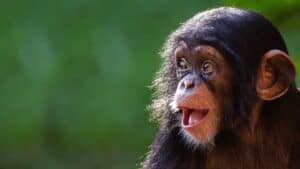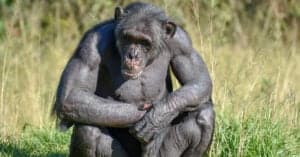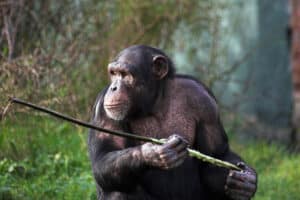Baby chimpanzees are just cute! They are amazing creatures that are the most similar animal to humans on the planet. Did you know that baby chimps can laugh while playing or that they are born knowing how to grip their mothers for survival?
Keep reading to learn five incredible facts and look at some adorable pictures of baby chimps.
#1: One Psychologist Raised a Baby Chimpanzee Alongside His Baby for Science!
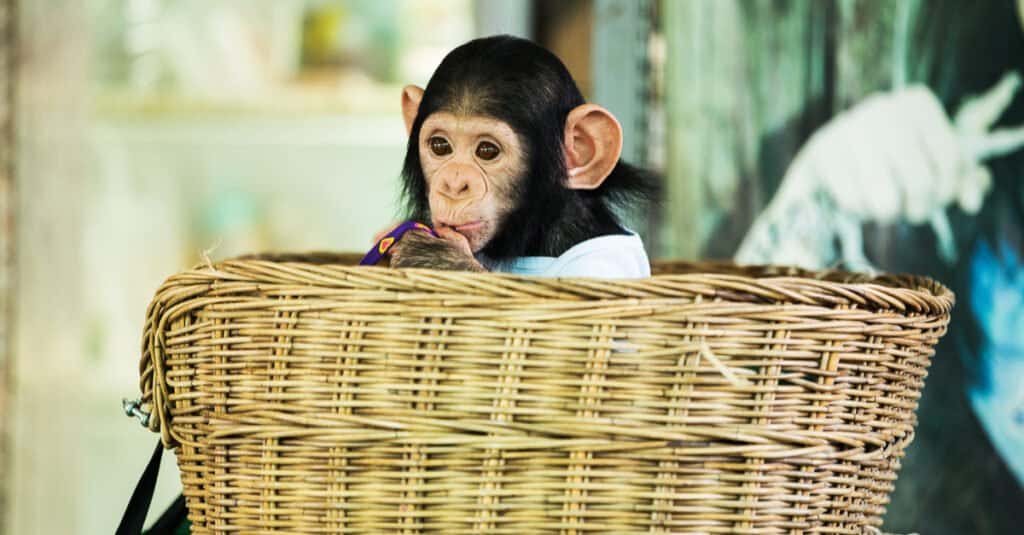
Baby chimps have better brain development than human babies at birth.
©subin pumsom/Shutterstock.com
In 1931, a psychologist, Winthrop Niles Kellogg, decided to raise a baby chimp simultaneously with this newborn baby. His experiment was to see if the baby chimp would be able to pick up on human traits if raised the same way as human babies. While conducting his experiment, the baby chimp did well in the tests that he performed to compare the two babies.
However, after a period of time, the baby chimp plateaued and stopped succeeding as well in the tests. Kellogg and his wife decided to end the experiment early just nine months after it began. There was no documented reason why it was ended, but it’s speculated that the Kellogg’s may have been worried about their son’s safety due to the size and strength of the chimp.
#2: Baby Chimps Laugh While Playing
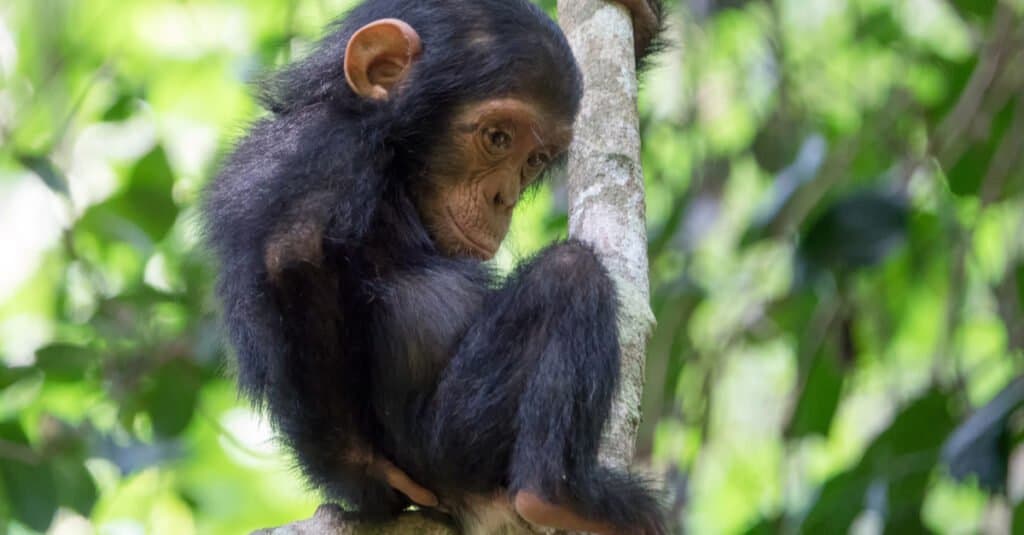
Baby chimps love to play and often laugh while doing so.
©Phil Hyde/Shutterstock.com
There’s no doubt that baby chimpanzees have many similarities to humans, and laughing is one of them! When playing with other baby chimps, mothers, or other members of their families, scientists have observed these amazing primates laughing, hugging, and even walking on two legs!
What’s more, baby chimps also live in communities much like human babies. Their communities help raise the babies by helping to protect them from danger, “babysitting”, and assisting in teaching the babies new skills. In other words, chimpanzee mothers have a “village” to help raise their young.
Another awesome similarity that baby chimps have to human chimps is their ability to share. Instead of sharing toys and games, though, baby chimps are taught to share tools and foods with their friends. That’s pretty awesome!
#3: Chimp Infants Stay with Their Mothers for Seven to Ten Years
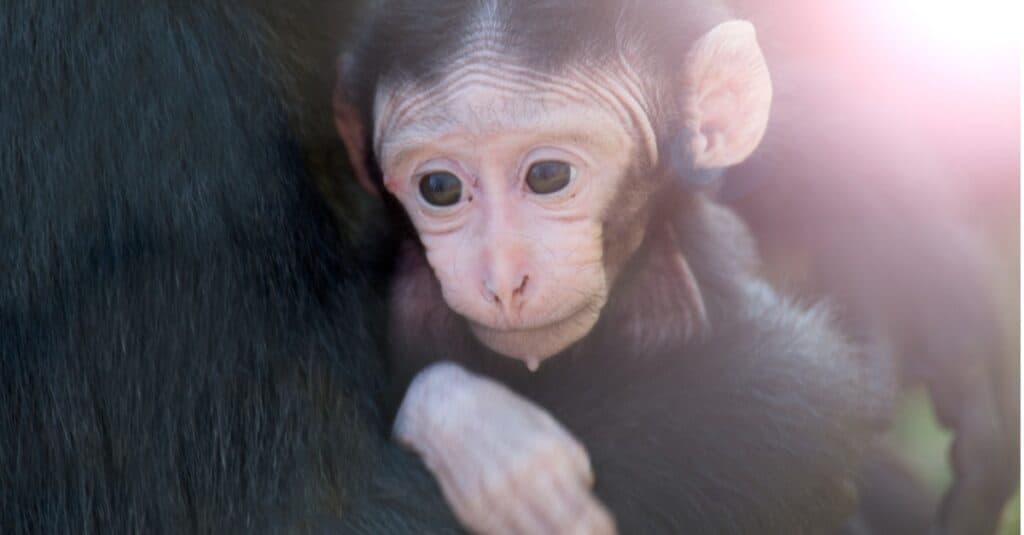
Baby chimps often stay with their mothers for up ten years.
©iStock.com/AnjoKanFotografie
Baby chimpanzees learn everything they know from their mothers. For their first six months of life, they are completely dependent on their mothers for not only protection but also to travel by clinging to their mother’s chest. After that, they are a bit more mobile but still cling to their mothers back to travel longer distances until they are around two years old.
By the age of two, chimps are old enough to be mostly independent enough to travel and live with their communities. However, they are not yet ready to go off into the wild on their own. Instead, they spend the next several years with their mothers. During this time, they learn how to find food, build nests for sleeping, and how to use tools in their daily lives for survival.
#4: Baby Chimpanzees are Human Babies’ Closest Relatives
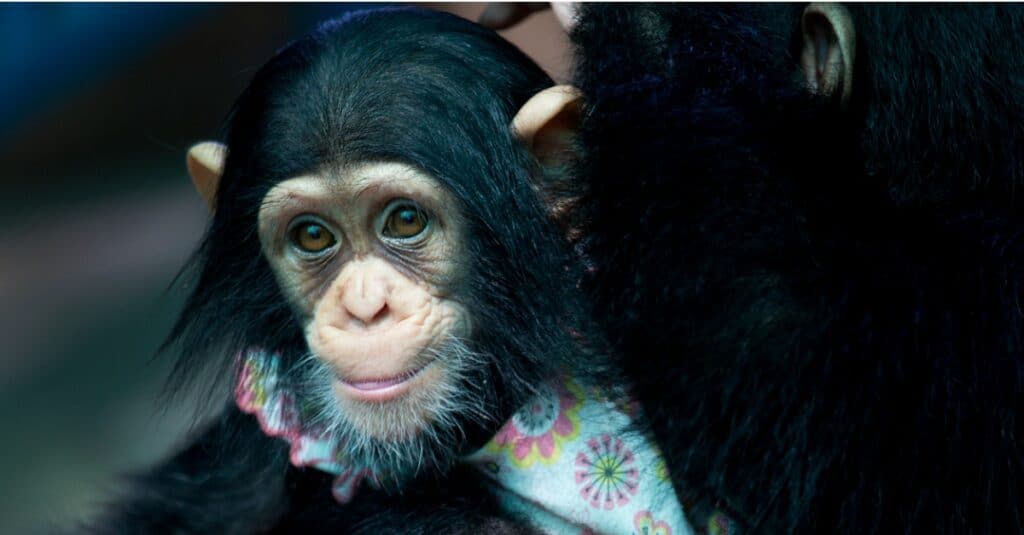
Baby chimps share almost 99% of their DNA with humans.
©iStock.com/Suthat_Chaitaweesap
Did you know that baby chimpanzees are extremely closely related to human babies? It’s true! Scientists have found that chimps share 98.8% of their DNA with human babies. They also have many other similar traits such as expressive faces, toes, and fingers that can grasp. They can even learn how to smile and love being tickled!
Baby chimps have even been able to be taught some sign language to communicate with humans! They are among the most intelligent animals on the planet. When they are born, they have the cognitive function and brain development that would be similar to an 18-month-old human baby. That’s a smart cookie!
#5: Baby Chimps are Born Knowing How to Grip Their Mothers
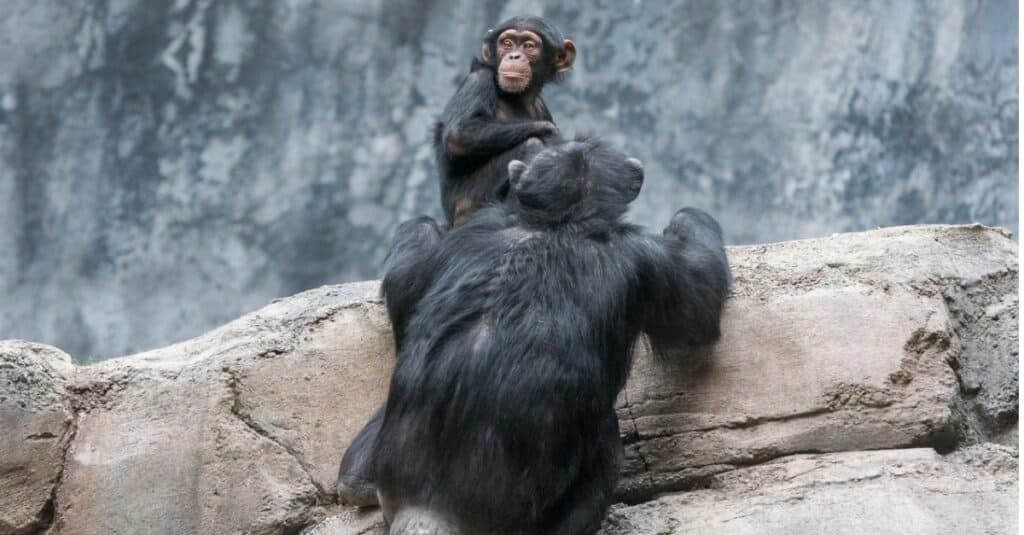
Infant chimps have the innate ability to grip their mothers.
©iStock.com/JeannetteKatzir
When a baby knows how to do something without needing to be taught, it’s called an innate ability. One of the most fascinating facts about baby chimpanzees is that they are born knowing how to grip their mothers. Their grip is also surprisingly strong – they can hold steadfast to their mother while she travels through the trees for many miles.
Since this trait is essential to their survival since they can’t get around very well as newborns, it’s pretty amazing. Baby chimps first cling to their mother’s chest. As they grow older, stronger, and more independent, they eventually switch to riding on their mother’s back for long distances and eventually are able to travel on their own.
The photo featured at the top of this post is © subin pumsom/Shutterstock.com
FAQs (Frequently Asked Questions)
What are baby chimpanzees called?
Baby chimps are called infants, just like human babies!
What do baby chimpanzees eat?
Baby chimps drink breastmilk until they are between 3.5 and 4.5 years old. This milk provides them with essential nutrients for their survival. Once they are weaned, they have an omnivorous diet, which means they eat a mix of fruits, vegetables, and meat.
How big are baby chimpanzees?
When baby chimps are born, they weigh about 4.5 pounds.
Thank you for reading! Have some feedback for us? Contact the AZ Animals editorial team.



